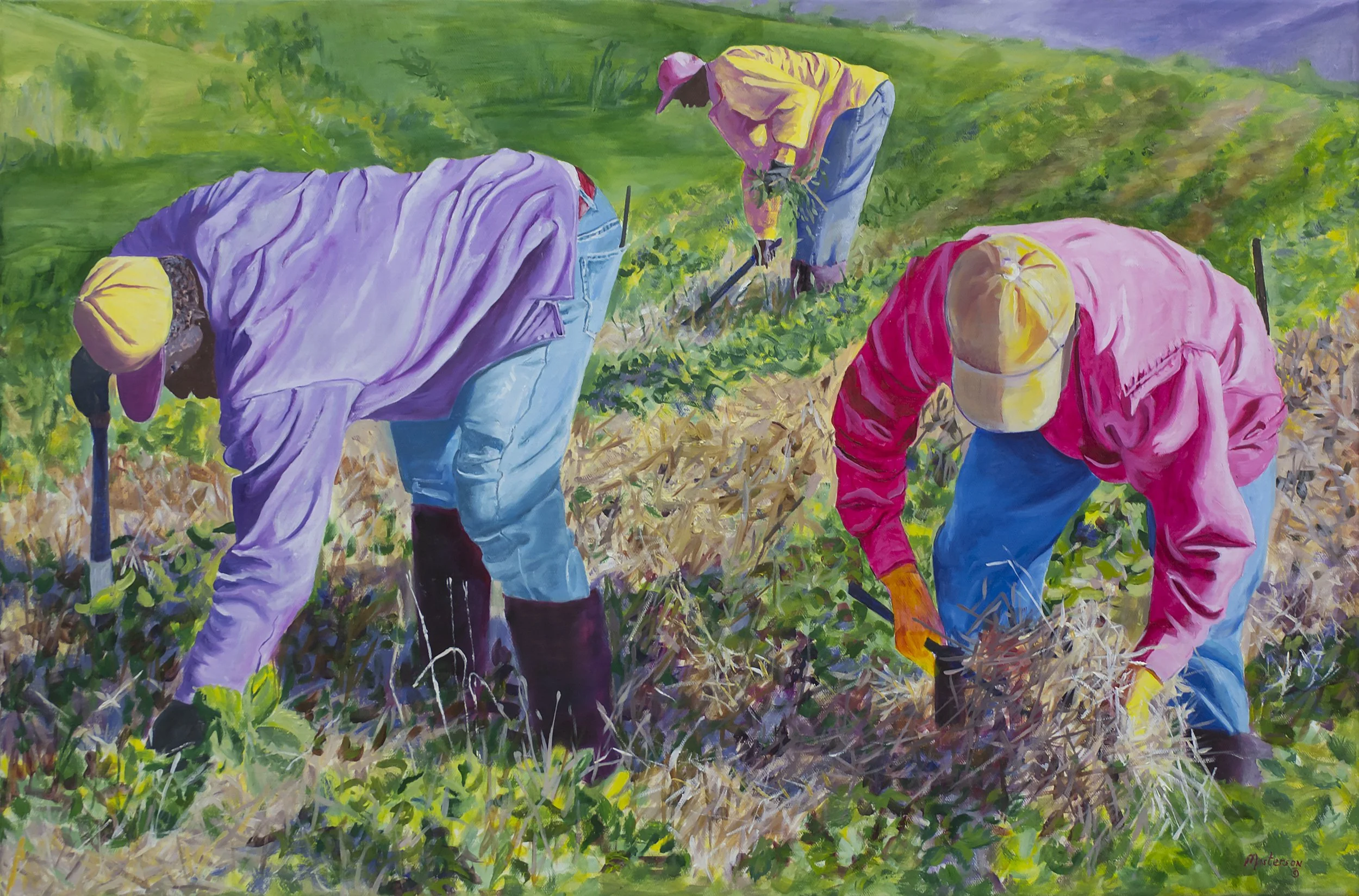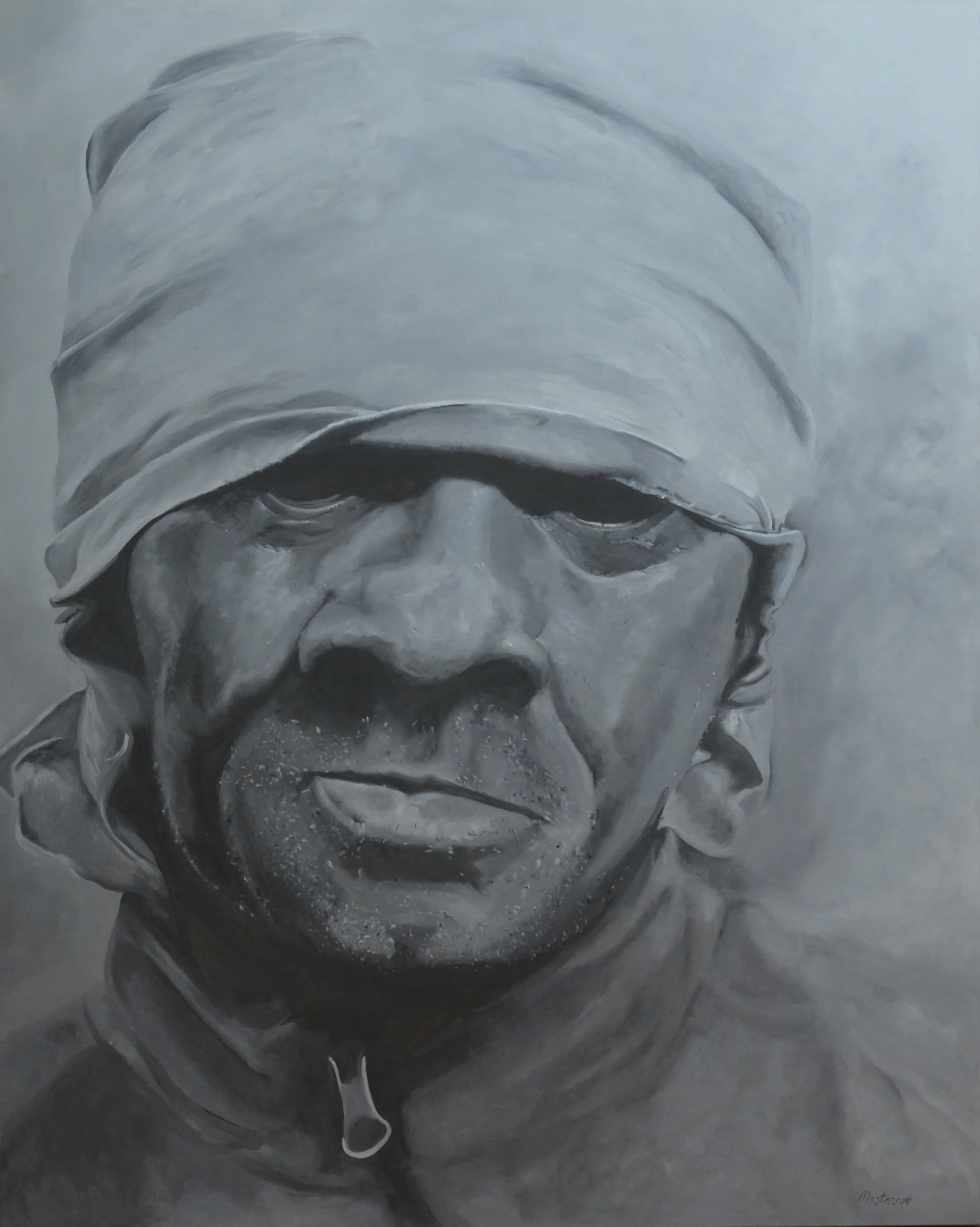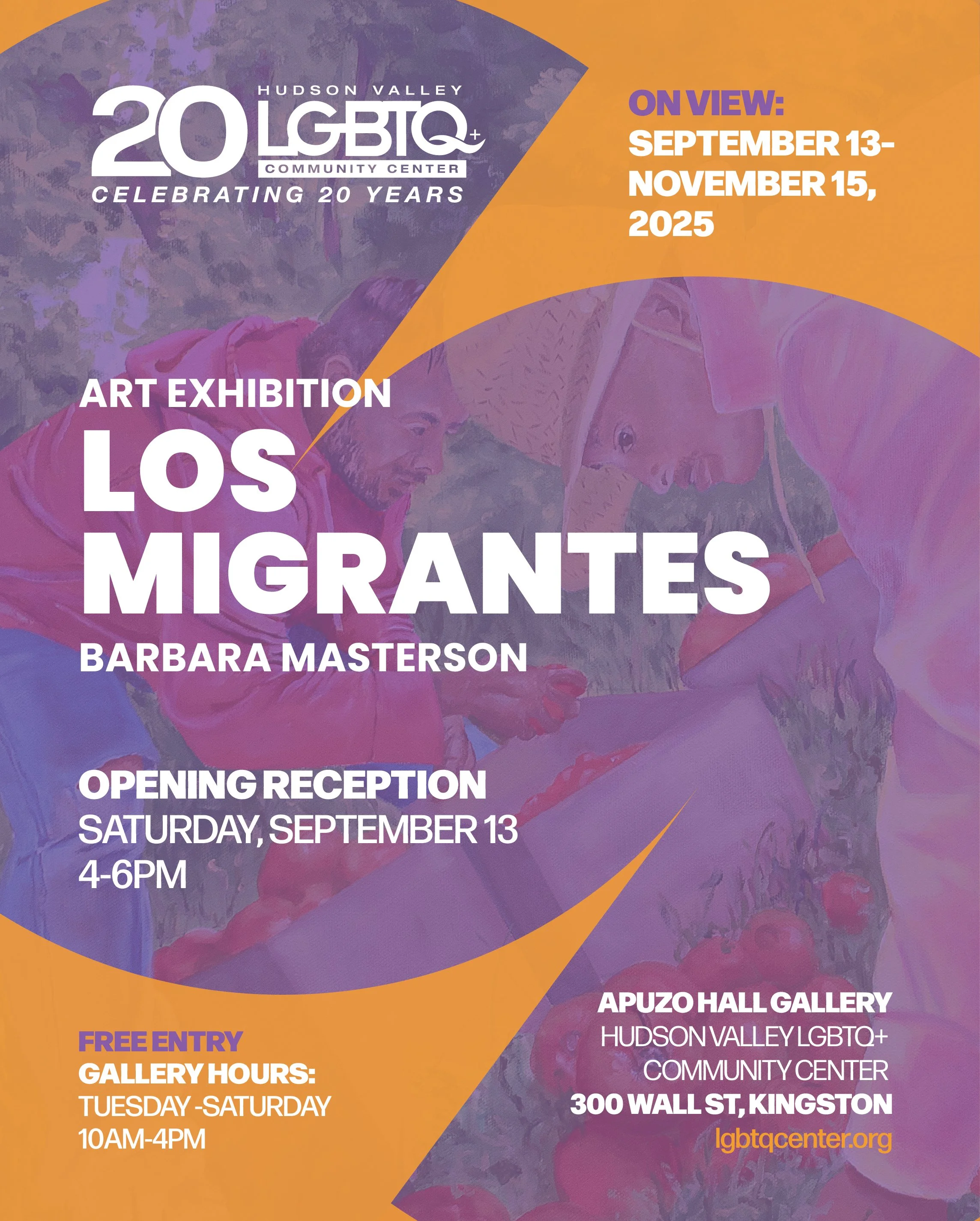
Art Gallery
The Gallery at Apuzzo Hall provides the space to showcase work featuring the LGBTQ+ community and issues important to us.
Each year, the Community Center launches up to four shows. These exhibits feature the work of LGBTQ+ artists, highlight the diversity of our community and offer an opportunity to draw attention to themes and issues that matter to our community.
The Gallery, which is coordinated by a small team of staff and volunteers, also provides an important venue for young and emerging queer artists, and an opportunity to both show and sell their work.
If you are interested in volunteering with Gallery or would like more information about how to submit your work for consideration, call Michael Erp at michael@lgbtqcenter.org or Tracy Bouvette at tracy@lgbtqcenter.org.
Gallery Mission
The goal of the Apuzzo Gallery is to feature the work of LGBTQ+ artists, especially those living and working in the Hudson Valley, to explore issues that impact our community and act as a hub to activate and inform. We believe that we are all artists at heart and that discussion, learning and healing can occur through creation, display and engagement with the arts. As part of this, we strive to look at art as a means for uplifting historically marginalized groups by incorporating an intersectional lens in the curation of art exhibits and related programming.
CURRENT EXHIBITION:
LOS MIGRANTES
Los Migrantes Paintings by Barbara Masterson
Exhibition Details
Opening Reception: Saturday, September 13, 4-6pm
On View: September 13 - November 15, 2025
Location: Apuzo Hall Gallery, 300 Wall Street, Kingston
Gallery Hours: Tuesday-Saturday, 10am-4pm
Admission: Free Entry
Light refreshments and beverages will be served at the opening reception.
About the Exhibition
From the "Hands That Feed Us" Project
Hudson Valley artist Barbara Masterson's paintings reveal the migrant workers who sustain local agriculture—individuals often invisible despite their essential contributions. Through intimate portraits that began as distant figures in her plain air work, Masterson challenges us to see both the labor and humanity of those who feed our community.




ART STATEMENT
Art is like a serum, transforming its audience for good or ill.
Familiar shapes in fields and orchards, migrant workers toil in the Hudson Valley doing jobs most Americans won't, earning modest wages, sometimes risking deportation.
Hard at work, they summon our attention and invite us to come closer, to see their labor and their humanity.
Who are they? Can you see them?
It's possible for society to confer invisibility on a group. It's convenient; if the group is invisible, we relieve ourselves of concern about health care, working conditions, pesticides, housing, lack of ability to get their own food.
What is life like for them?
What role do we play in keeping them unseen?
My work can expand our perceptions of these workers. If only by their images in my paintings, the viewer will come to see these persons for the vital role they have in our lives.
— Barbara Masterson
ABOUT THE ARTIST
Barbara Masterson lives and works here in the Hudson Valley. She received her Master of Arts in painting from SUNY New Paltz in 1990.
Since 2015, Masterson has focused her practice on documenting migrant agricultural workers in the Hudson Valley.
Her large-scale drawings and paintings have transitioned to portraits of men and women in society who are invisible.
Masterson has exhibited at the Woodstock Museum of Art and the Katonah Museum of Art. In 2022, she received the "Artivist" award from Arts Mid-Hudson Ulster County Executive Arts Awards and the Beatrice and Sidney Laufman award from the Woodstock Art Association and Museum.
Her work is in private collections in the United States, Italy, Germany, and Guam.
WHY THIS EXHIBIT?
WHY HERE? WHY NOW?
We are delighted to have Barbara Masterson return to the Community Center and to share with us some of her recent, powerful work.
Some may ask,”Why this exhibit? Why Now? Why Here?” All good questions.
First, “Why This Show?”
This space was created with intention – to highlight the work of queer, trans and ally artists, especially those from our Mid-Hudson Valley. Barbara, a member of our local LGBTQ+ community, has generously shared her work with us. It is true that these works, which Barbara chose in consultation with Michael Erp, our Gallery Coordinator, and Tracy Bouvette, a Community Center volunteer, facilitator and artist, are striking and deserve to be seen and enjoyed for that reason alone. Equally important is what they depict – the key role that migrants play in regional agriculture. We literally enjoy the fruits of their often unseen labor.
Second, “Why Now?”
We live in a moment of churn and instability, when empathy is openly discussed as character defect, where people who are different are mocked, where immigrants of all stripes are targeted. We cannot shy away from these things. We must seek to understand, to embrace and welcome all, to acknowledge our interdependence and to have empathy. Barbara’s work forces us to do this.
Third, “Why Here?”
Our LGBTQ+ community, particularly the transgender members of our community, are under attack. The road ahead is unknown and the challenges many. And yet, we are not alone. We can easily name other targeted communities – among them people of color, women, people living with disabilities, those forced to live hand to mouth, those under the thumb of despots, those who believe in freedom and democracy. To conquer the hate and callousness we see, to achieve greater equity for all, we must find our commonalities and come together with others.
We are queer and trans. We are all these other communities (and more) too. Intersectionality is real and it is our hidden strength. Coalition and community are the keys to overcoming. Barbara’s work calls on us to remember this at a moment that is crucial for our community and our country.



